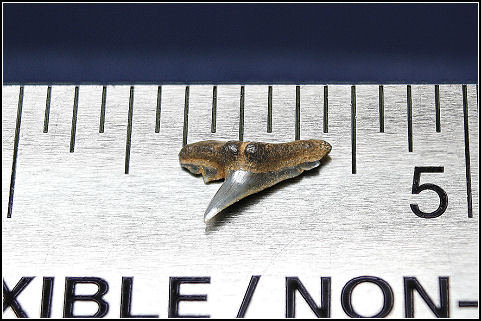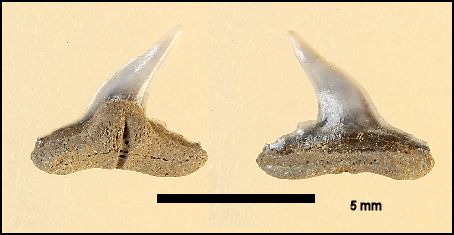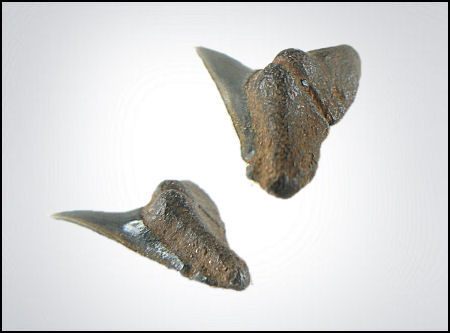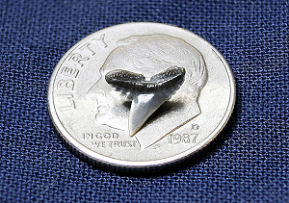|
Extinct Requiem Shark Age - Eocene Commonality - Common The Physogaleus genus first
appeared in the Eocene as a small shark called Physogaleus secundus.
The teeth of this species are small averaging ¼ inches (6 mm), just
large enough that a few can be found using the standard ¼ inch screens.
Screening with a finer meshed screen will produce significantly more
specimens. Physogaleus' teeth are smaller than the tiger sharks
and lack the heavy serrations associated with the tigers. The roots are
bulky with a flat face that angles away from the lingual side of the
tooth. There is a strong lingual protuberance and deep nutrient grove.
The teeth of P. secundus show differences between male and
female. The most conspicuous difference occurs in the distal serrations.
The serrations on female teeth number from 3 to 5 and are uniformed,
while on the male these serrations number between 2 to 3 and are uneven.
The teeth of Physogaleus secundus
are small, averaging about 1/4 inch in
The roots of the sharpnose are very distinctive, they have a strong
Left - female / Right male (labial view)
|





